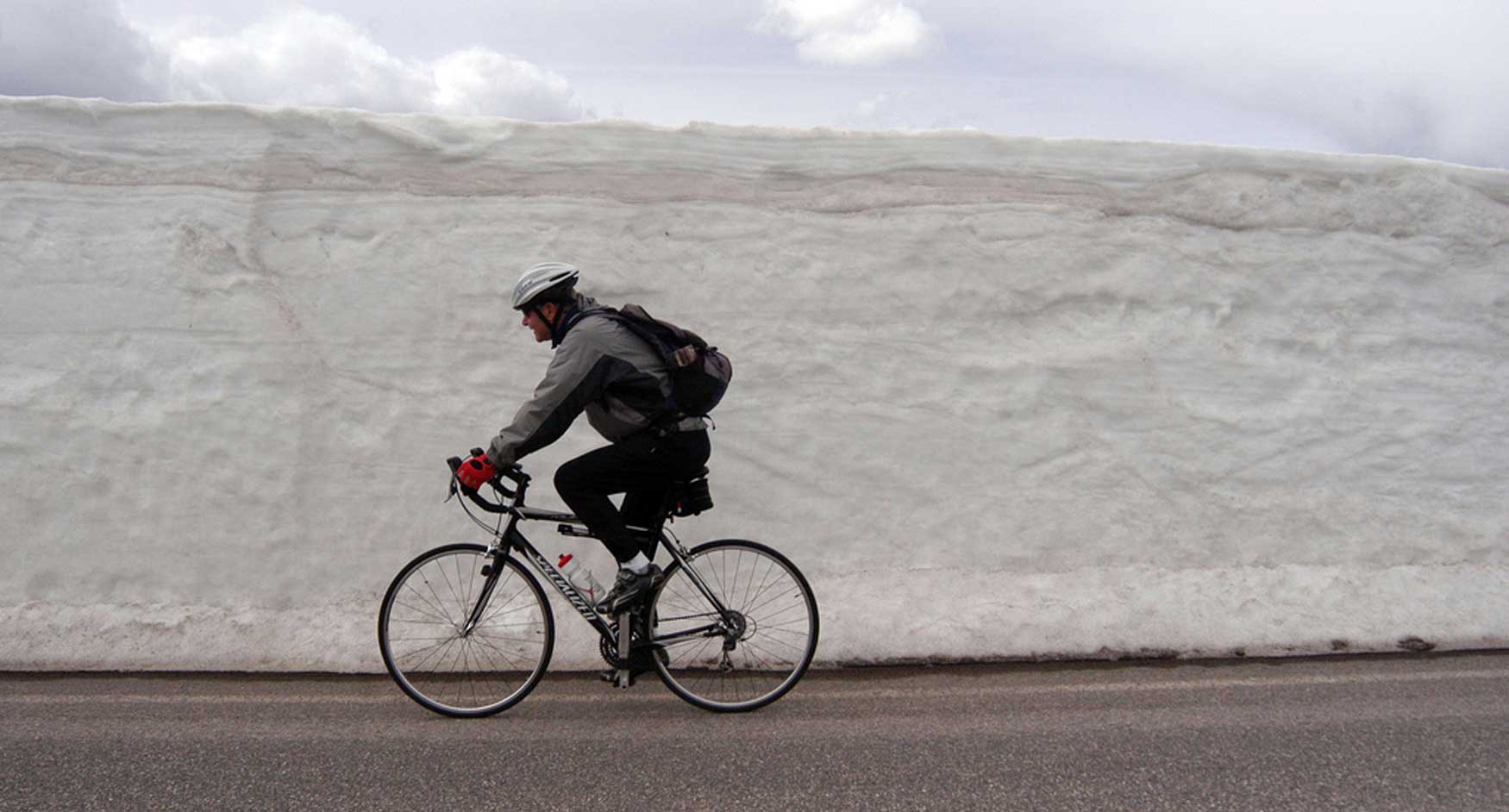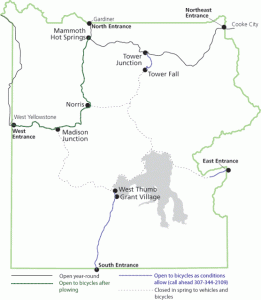 A bicyclist rides past freshly plowed snow along the road between Norris and Canyon Village. (Ruffin Prevost/Yellowstone Gate file photo – click to enlarge)
A bicyclist rides past freshly plowed snow along the road between Norris and Canyon Village. (Ruffin Prevost/Yellowstone Gate file photo – click to enlarge)
From Staff Reports
Bicycling through Yellowstone National Park can be both a grand adventure and a harrowing undertaking. With winter bicycle travel impossible on most roads and summer roads often clogged with buses and RVs, some hardy cyclists focus on the month before the park opens each spring as a time when they have roads largely to themselves.
As park road crews continue to plow snow for the start of automobile travel in a few weeks, a portion of the park is open to bicyclists for this short “bicycle season.”
 Yellowstone National Park spring bicycling map. (NPS image-click to enlarge)
Yellowstone National Park spring bicycling map. (NPS image-click to enlarge)
Bicyclists willing to brave the often unpredictable elements of spring in Yellowstone can now travel 49 miles of park roads from the West Entrance at West Yellowstone, Mont., to Mammoth Hot Springs.
A 14-mile section of road between the West Entrance and Madison Junction is already open for the cycling-only shoulder season as plowing crews clear snow and ice in preparation for opening the route to automobile traffic on April 26.
Park officials warn in a statement released last week that “a bicycle trip intoYellowstone this time of year is not to be undertaken lightly.”
Rapidly changing weather can be blustery, snowy and brutally cold. Snow and ice may cover sections of roads. Bears, bison, elk, wolves and other wildlife can be encountered at any time.
There are also no public services along these sections of road. Cyclists should expect to encounter (and yield to) snowplows or other vehicles operated by park employees or construction workers traveling in as part of park operations.
Bicyclists are required to ride single-file and follow all other rules of the road. Park officials strongly encourage cyclists to carry bear spray and to be prepared to turn around and backtrack when encountering wildlife on the road.
Riders should be appropriately equipped and prepared to endure severe winter conditions for an extended period of time, in case they experience a mechanical breakdown, injury or other emergency. Cell phone coverage throughout the park is sparse, and rangers do not regularly patrol these routes at this time of year, so riders must have a plan for self-rescue or repair.
The road from the North Entrance at Gardiner, Mont., to Cooke City, Mont., at the park’s Northeast Entrance is open all year to cyclists and automobiles, weather permitting.
Cyclists are urged to call 307-344-2107 from 8:00 a.m. to 4:30 p.m. on weekdays for updated road access information, or call 307-344-2113 for 24-hour weather information before committing to any park ride. Additional planning information is also available online.
Updated Yellowstone National Park road information is available 24 hours a day by calling 307-344-2117.
Contact Yellowstone Gate at 307-213-9818 or info@yellowstonegate.com.
